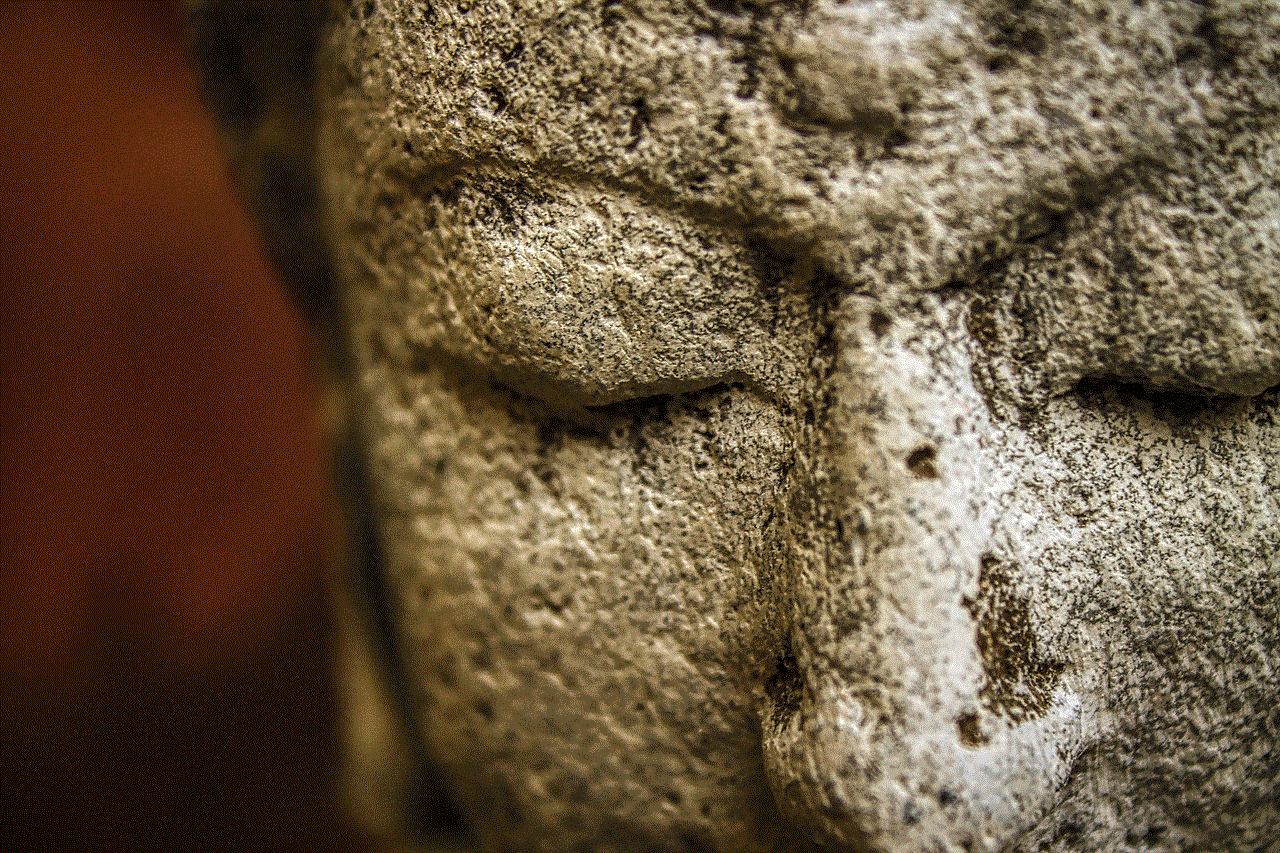does do not disturb turn off location
# Understanding Do Not Disturb Mode: Does It turn off location ?
In today’s fast-paced digital world, our smartphones have become essential tools for communication, navigation, and personal organization. With the convenience of modern technology, we often find ourselves inundated with notifications, messages, and alerts that can be overwhelming. To combat this, many smartphone users turn to the “Do Not Disturb” (DND) feature to help manage interruptions. However, a common question arises: **Does Do Not Disturb turn off location services ?** In this article, we will explore the intricacies of Do Not Disturb mode, its impact on location services, and the broader implications for privacy and usability.
## What is Do Not Disturb Mode?
Do Not Disturb mode is a feature available on most smartphones and devices that allows users to silence incoming calls, messages, and notifications. This feature is particularly useful in situations where interruptions are undesirable, such as during meetings, while studying, or at night. When activated, Do Not Disturb can block all alerts or allow only specific contacts to reach you, depending on the user’s settings.
### How Does Do Not Disturb Work?
When you enable Do Not Disturb, the device essentially mutes all sounds and vibrations associated with alerts. However, some phones allow customization, enabling users to whitelist certain contacts or apps so that they can still receive notifications from them. This level of control ensures that users can maintain important communication while minimizing distractions from less critical sources.
### Common Features of Do Not Disturb
Do Not Disturb mode typically includes several customizable features:
– **Silencing Calls and Notifications**: Users can choose to silence all calls, messages, and notifications or allow only those from specific contacts.
– **Scheduled DND**: Many devices allow users to set a schedule for Do Not Disturb, automatically enabling it at certain times, such as during the night or during work hours.
– **Repeat Call Options**: Some devices can be set to allow a call through if the same person calls multiple times within a short period, signaling an emergency.
– **Visual Indicators**: While DND is active, users often see visual indicators on their devices that inform them of the active mode.
## The Role of Location Services
Location services are a critical feature on smartphones, enabling various functionalities such as GPS navigation, location-based reminders, and geo-tagging of photos. These services use a combination of GPS, Wi-Fi, cellular networks, and Bluetooth to determine the device’s location.
### How Location Services Work
Location services operate through a network of satellites and ground-based signals. When a smartphone user activates location services, the device communicates with satellites to triangulate its position. This information can be utilized by apps for navigation (like Google Maps), weather updates, and even location sharing with friends or family.
### Privacy Concerns with Location Services
As location services provide detailed information about a user’s whereabouts, privacy concerns have arisen. Many users are apprehensive about how their location data is used, who has access to it, and how it is stored. These concerns are particularly relevant in the context of social media, where location tagging can lead to unwanted exposure.
## Does Do Not Disturb Turn Off Location Services?
The simple answer is no; enabling Do Not Disturb mode does not automatically turn off location services on your device. While DND focuses on managing notifications and calls, location services operate independently and can continue functioning as long as they are not manually disabled in the device settings.
### The Independence of DND and Location Services
The functionalities of Do Not Disturb and location services are designed to serve different purposes. DND is primarily concerned with the management of alerts and notifications, allowing users to focus on tasks without interruptions. Conversely, location services are about providing information and functionalities that rely on the user’s geographical position.
### User Control Over Location Settings
While DND does not affect location services directly, users have full control over their location settings. If a user wishes to disable location services for privacy reasons, they can do so through their device’s settings. This can be done independently of the Do Not Disturb mode, allowing for flexible management of both features.
## Implications for Privacy and Usability
The fact that Do Not Disturb does not turn off location services has significant implications for user privacy and device usability. Users who rely on DND to manage their notifications may not be aware that their location is still being tracked, which can lead to unintended consequences.
### Awareness of Location Tracking
It is crucial for smartphone users to be aware of how their devices handle location tracking. Many apps request access to location services for functionality, but users should regularly review which apps have this access. This awareness is especially important when enabling features like Do Not Disturb, as users may assume that turning off notifications also limits tracking.
### The Balance Between Usability and Privacy
There is an ongoing tension between usability and privacy in the realm of mobile technology. While features like Do Not Disturb enhance usability by minimizing interruptions, they do not automatically address privacy concerns associated with location tracking. Users must take proactive steps to manage their privacy settings while enjoying the benefits of their devices.
## Best Practices for Managing Do Not Disturb and Location Services
To effectively manage both Do Not Disturb and location services, users should consider implementing the following best practices:
### 1. Regularly Review Location permissions
Users should periodically check which apps have access to their location services. This can help identify any unnecessary permissions and enhance overall privacy.
### 2. Customize Do Not Disturb Settings
Take advantage of the customizable features of Do Not Disturb. Allow notifications from essential contacts while silencing less critical alerts to strike a balance between connectivity and focus.
### 3. Be Mindful of App Settings
Some applications may have their own location tracking settings. Users should read the privacy policy and adjust settings according to their comfort level with data sharing.
### 4. Utilize Scheduled DND
Using the scheduled feature of Do Not Disturb can help maintain a routine while minimizing interruptions. This is particularly useful for work or study sessions.
### 5. Educate Yourself on Device Features
Understanding how your smartphone manages both DND and location services is essential for maximizing their potential. Familiarize yourself with the settings and options available on your device.
## Conclusion
In conclusion, the Do Not Disturb feature does not turn off location services on smartphones. While DND is effective for managing notifications and interruptions, location tracking operates independently. Users must remain vigilant about their privacy settings, regularly reviewing permissions and understanding how their devices function.
As our reliance on smartphones continues to grow, so too does the importance of balancing usability with privacy concerns. By being proactive in managing both Do Not Disturb and location services, users can enjoy the benefits of modern technology while safeguarding their personal information. Ultimately, awareness and understanding are key to navigating the complexities of smartphone functionalities in today’s digital landscape.
tile find phone
# Tile Find Phone: A Comprehensive Guide to Tracking Your Devices
In our fast-paced, technology-driven world, the risk of misplacing or losing our devices has become a common concern. Smartphones, tablets, and other gadgets are not merely tools; they often contain a wealth of personal information, including contacts, messages, photos, and sensitive data. Losing such devices can lead to significant inconvenience and potential security risks. Fortunately, the Tile Find Phone feature has emerged as a popular solution for tracking down misplaced devices. This article will delve into the functionality, benefits, and tips for using Tile effectively to locate your devices.
## Understanding Tile and Its Functionality
Tile is a Bluetooth-enabled tracking device that helps users locate their belongings, including smartphones, wallets, keys, and even pets. The Tile app, available for both iOS and Android, connects to these small, lightweight devices, allowing users to track their items through a simple interface. The core functionality of Tile revolves around its ability to connect to the user’s smartphone and provide real-time location updates.
When you attach a Tile to an item, you can use your smartphone to see the last known location of that item on a map. If you misplace your phone, you can activate the Tile feature and make your phone ring, even if it’s on silent mode. This two-way tracking system is what makes Tile a favorite among users who frequently misplace their belongings.
## The Importance of Finding Your Phone
The significance of being able to find your phone cannot be overstated. Smartphones have become essential extensions of our lives, serving as communication devices, personal organizers, and gateways to the internet. Losing a smartphone can lead to a cascade of issues, including:
1. **Loss of Personal Data**: Most people store critical personal information on their phones, including contacts, financial information, and sensitive data. Losing a phone could mean losing access to this information.
2. **Security Risks**: A lost phone can become a security hazard, especially if it falls into the wrong hands. Thieves can access personal data, making it imperative to locate the device quickly.
3. **Inconvenience**: The inconvenience of not having a phone can disrupt daily life, making it challenging to communicate, navigate, or access services.



4. **Financial Loss**: Losing a smartphone can also be financially burdensome, especially if it requires costly replacements or if there are associated fees for data breaches.
5. **Emotional Distress**: For many, a smartphone is more than just a device; it carries memories, photos, and connections. The emotional distress of losing it can be significant.
Tile’s Find Phone feature alleviates many of these concerns, making it a valuable tool for anyone reliant on their devices.
## How to Use Tile to Find Your Phone
Using Tile to locate your phone is straightforward. Here’s a step-by-step breakdown of the process:
### Step 1: Set Up Your Tile Device
To get started, you need to download the Tile app from your device’s app store and create an account. Once you have the app, you can set up your Tile device by following the on-screen instructions. Attach the Tile to an item you frequently misplace, such as your keys or wallet.
### Step 2: Connect Your Tile to Your Phone
After setting up your Tile, ensure that it is connected to your smartphone via Bluetooth. The app will guide you through this process, allowing you to assign a name to the Tile for easy identification.
### Step 3: Locate Your Phone
When you misplace your phone, open the Tile app on another device or ask a friend with the app to help. You can select the “Find Phone” option, which will send a signal to your phone, causing it to ring. This feature works even if the phone is set to silent, making it easier for you to locate it.
### Step 4: Use the Map Feature
If the phone is out of reach, the Tile app will display the last known location of your device on a map. You can use this information to retrace your steps and find your phone.
### Step 5: Utilize Community Find
Tile has a unique community feature that allows users to help each other locate their devices. If your phone is lost and out of Bluetooth range, other Tile users can anonymously help you find it. When another Tile user comes within range of your lost device, you will receive an update on its location.
## Benefits of Using Tile for Finding Your Phone
Tile offers several advantages for users looking to keep track of their devices:
### 1. **User-Friendly Interface**
The Tile app is designed with the user in mind. Its intuitive interface allows even the least tech-savvy individuals to navigate the app effortlessly. The steps to find a phone are clear and concise, making it easy for anyone to use.
### 2. **Two-Way Tracking**
Tile’s two-way tracking feature means that not only can you find your phone using the Tile, but you can also find your Tile if you lose it. This dual functionality is incredibly useful and adds to the overall value of the product.
### 3. **Community Support**
The Tile community is vast and growing, providing users with an enhanced chance of finding lost items. The ability to leverage the collective network of Tile users can be a game-changer when it comes to locating lost devices.
### 4. **Multiple Devices**
Tile allows users to connect multiple devices to a single account. This means you can track your keys, wallet, and even your phone all from one app. The ability to manage multiple devices streamlines the tracking process.
### 5. **Long Battery Life**
Tile devices are designed for longevity. Most Tiles have a battery life of several months to a year, depending on usage. When the battery does run out, you can easily replace it, ensuring that your tracking solution remains functional.



## Tips for Maximizing Tile’s Effectiveness
While Tile is a powerful tool for locating your phone, there are several tips and best practices you can follow to maximize its effectiveness:
### 1. **Regularly Check Connection**
Ensure that your Tile device is regularly connected to your phone via Bluetooth. This will enable real-time tracking and ensure that you receive updates on your phone’s location.
### 2. **Keep the App Updated**
Tile frequently releases updates to improve functionality and security. Keeping the app updated will ensure you have the latest features and fixes.
### 3. **Practice Using the Features**
Familiarize yourself with all of Tile’s features, such as the community find option and the map tracking feature. Knowing how to use these tools can save time and frustration when you need to locate your devices.
### 4. **Use the Widget Feature**
If you find yourself regularly looking for your phone, consider adding the Tile widget to your smartphone’s home screen. This will allow you to quickly access the Tile app without navigating through menus.
### 5. **Educate Friends and Family**
If you have friends or family members who also use Tile, educate them on how the community find feature works. This can enhance your chances of locating lost devices, as multiple people can help in the search.
## Comparing Tile with Other Tracking Solutions
While Tile has become a leader in the tracking device market, it’s essential to consider how it compares to other solutions:
### 1. **Apple AirTag**
Apple’s AirTag operates on a similar principle but is designed specifically for Apple users. It integrates seamlessly with the Apple ecosystem, allowing users to track items using the Find My app. However, it lacks the community aspect of Tile, which can be a drawback for some users.
### 2. **Samsung SmartTag**
Samsung offers the SmartTag, which functions similarly to Tile but is optimized for Samsung devices. While it provides excellent integration within the Samsung ecosystem, it may not be as versatile for users with devices from other manufacturers.
### 3. **Chipolo**
Chipolo is another competitor in the tracking space, offering similar features to Tile. However, users have reported that the Tile app is generally more user-friendly and has a broader community for support.
### 4. **TrackR**
TrackR was one of the earlier entrants into the tracking device market. While it offers similar functionalities, Tile has since improved its technology and community features, giving it a competitive edge.
## Future of Tracking Technology
As technology advances, the future of tracking devices looks promising. Innovations such as ultra-wideband (UWB) technology are set to improve location accuracy significantly. Tile has already begun integrating this technology into some of its newer products, enhancing the user experience.
Moreover, as more people become aware of the importance of tracking devices in their daily lives, the demand for solutions like Tile is likely to grow. Developers will continue to refine features and expand on existing capabilities to meet consumer needs.
## Conclusion
In a world where losing a phone can feel like losing a part of ourselves, tools like Tile offer a practical and efficient solution for tracking our devices. The combination of user-friendly technology, community support, and effective tracking features makes Tile a valuable investment for anyone reliant on their smartphone. By understanding how to utilize Tile effectively, users can minimize the stress and inconvenience of misplaced devices, ensuring they remain connected to what matters most.



Whether you are a busy professional juggling multiple devices or a student frequently on the go, Tile’s Find Phone feature can provide peace of mind and security in an increasingly digital world.